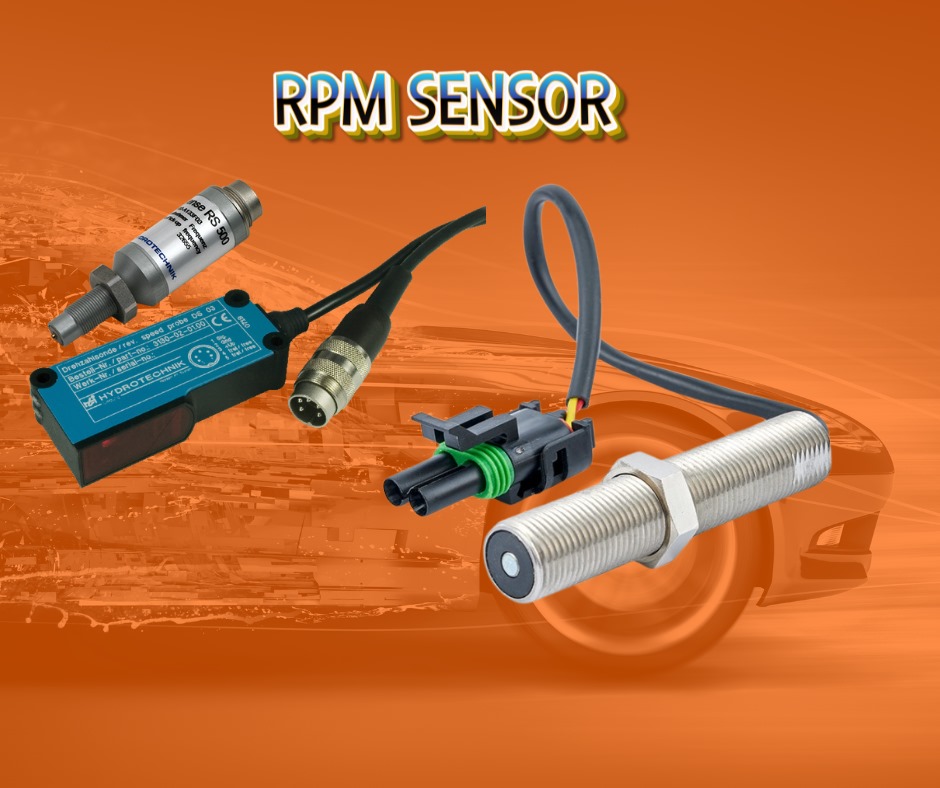The Role of RPM Sensors in Monitoring Engine Performance

Discover how RPM sensors revolutionize engine performance monitoring and why they're indispensable in modern automotive technology.
Understanding RPM Sensors: Definition and Basics
RPM sensors, also known as revolutions per minute sensors, are crucial components in modern automotive technology. These sensors measure the rotational speed of the engine's crankshaft, providing essential data to the vehicle's onboard computer system. By doing so, they ensure that the engine runs smoothly and efficiently.
The basic principle behind RPM sensors is relatively simple. They detect the number of times the crankshaft completes a full rotation within a minute. This information is then relayed to the engine control unit (ECU), which uses it to optimize various engine parameters, including fuel injection timing and ignition timing.
The Importance of RPM Sensors in Engine Health and Efficiency
RPM sensors play a pivotal role in maintaining engine health and efficiency. By constantly monitoring the engine's rotational speed, these sensors help in identifying potential issues before they become serious problems. For instance, if the RPM sensor detects irregularities in the engine's speed, it can indicate issues such as misfires or mechanical failures.
Moreover, RPM sensors contribute to fuel efficiency. By providing accurate data on the engine's speed, they enable the ECU to adjust the fuel injection and ignition timing precisely. This ensures that the engine operates at its optimal efficiency, reducing fuel consumption and emissions.
How RPM Sensors Work: From Detection to Data
The functioning of RPM sensors involves several steps, from detection to data processing. RPM sensors typically use a magnetic or optical method to detect the rotational speed. Magnetic sensors generate a signal based on the changes in the magnetic field as the crankshaft rotates, while optical sensors use a light beam and a rotating disc with slots to measure the rotation.
Once the sensor detects the rotational speed, it converts this mechanical information into an electrical signal. This signal is then transmitted to the ECU, which processes the data and makes real-time adjustments to the engine's operation. This continuous feedback loop ensures that the engine performs optimally under various driving conditions.
The Impact of RPM Sensors on Vehicle Performance and Safety
RPM sensors have a significant impact on both vehicle performance and safety. By providing accurate data on engine speed, they enable precise control over the engine's functions, leading to smoother acceleration and better overall performance. This is particularly important in high-performance vehicles, where precise engine control is crucial.
In terms of safety, RPM sensors help in preventing engine damage. By detecting irregularities in the engine's speed, they can alert the driver to potential issues before they lead to catastrophic failures. Additionally, the data from RPM sensors is used in various safety systems, such as traction control and anti-lock braking systems, ensuring a safer driving experience.
Advancements and Future Trends in RPM Sensor Technology
The technology behind RPM sensors continues to evolve, with advancements aimed at improving accuracy, reliability, and integration with other vehicle systems. Modern RPM sensors are more compact and robust, capable of withstanding harsh environmental conditions and providing more precise data.
Looking ahead, the future of RPM sensor technology lies in the integration with advanced driver-assistance systems (ADAS) and autonomous driving technologies. As vehicles become more connected and intelligent, RPM sensors will play a crucial role in ensuring optimal engine performance and safety. Additionally, advancements in sensor materials and manufacturing processes will lead to even more reliable and cost-effective RPM sensors in the future.

 Loading..
Loading..